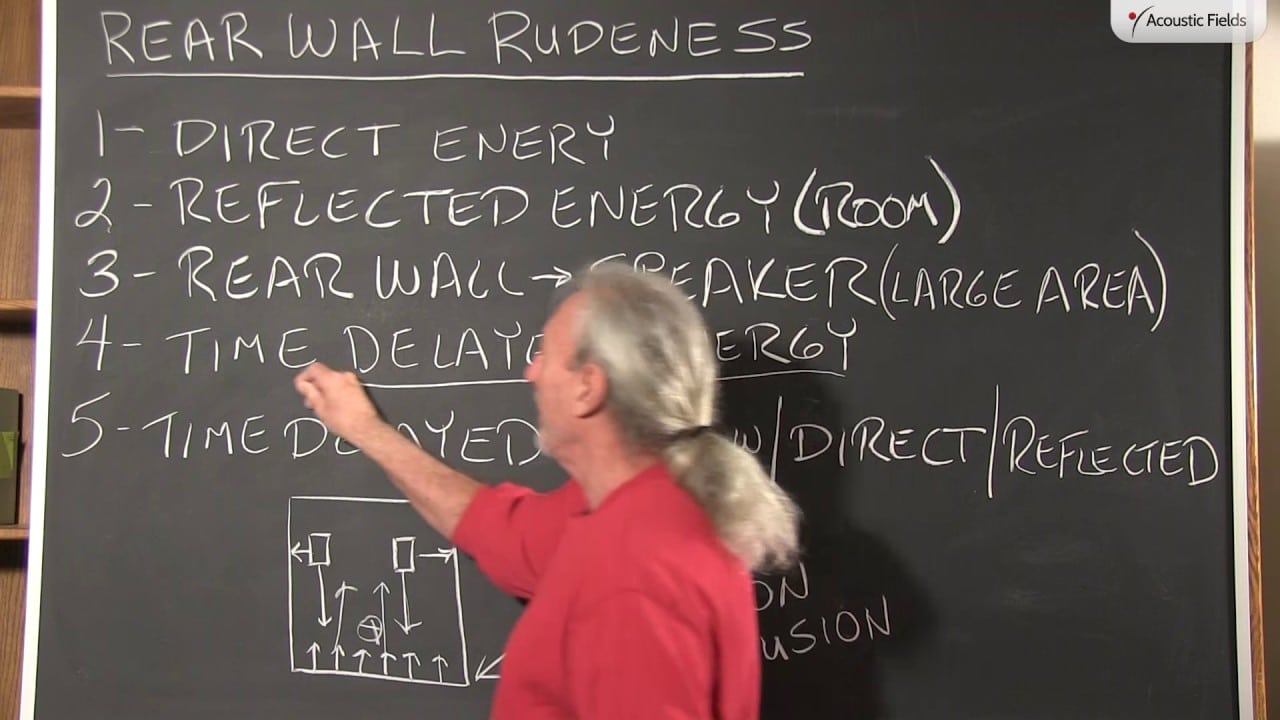Today we’re going to talk about the rear wall and how rude it is in our presentations and audio rooms. So let’s kind of back up a little bit and deal with what kind of energy strikes the rear wall. We have our direct energy and that’s the energy from our loudspeakers and that’s the purest form of energy we can have at the listening position, because that doesn’t include any of the room sound; then of course we have the reflected energy from the speakers and that is all about room sound.
So there’s management of the reflections, there’s a balancing act between reflections and direct energy. So it’s a complicated process we have time signatures that we have to keep in mind here depending on usage. So all of this energy from our speaker that strikes our rear wall and the rear wall then turns into a really large radiating surface area. Well we know from our definition of sound it travels at a constant speed so when it strikes that rear wall it’s going to come back and it’s going to wash over and mix with both the direct energy from our speakers, and the reflected energy in the room.
So we have this multiplicity of issues going on here so we have to be very, very careful about this rear wall and depending on the usage, and let’s just take a control room for example. If you have all this reflected in energy coming back at the listening or monitoring position, it’s going to be time delayed just like the reflections are off the side walls, but we have so much more surface area here and it’s more of a direct alignment so to speak and influences the direct energy from our speakers more that we have to be very cognizant of that at the mix and monitoring position.
So we have to be really careful with this time delayed signature in our control room so that we don’t hear it and incorporate it into our mixes. A lot of engineers call it slap back, you’ve heard the term slap back echo, not that accurate in terms but the slap back part is. So what they’re saying is that the time delayed energy field from that rear wall it washes over and there’s something about that time delayed signature washing over the back of our hearing mechanism in our ears that can really distort things, and you have to be really careful and balance everything out. If you want to test this just use absorption or diffusion on your rear wall.
If you don’t have any treatment right now put some absorption and put some diffusion on the rear wall and test it and you’ll find out just how large of an impact this surface area has. So let’s be careful of our rear wall rudeness so to speak and manage it correctly.
—
This is an unedited transcript from our video series from Acoustic Fields. There will be some errors in grammar and sentence structure that occur during this translation process.
For complete understanding and comprehension, please view the video which is included in this text. For any additional information regarding this topic or others relating to room acoustics, please contact us directly at:
P: 520 – 392 – 9486







